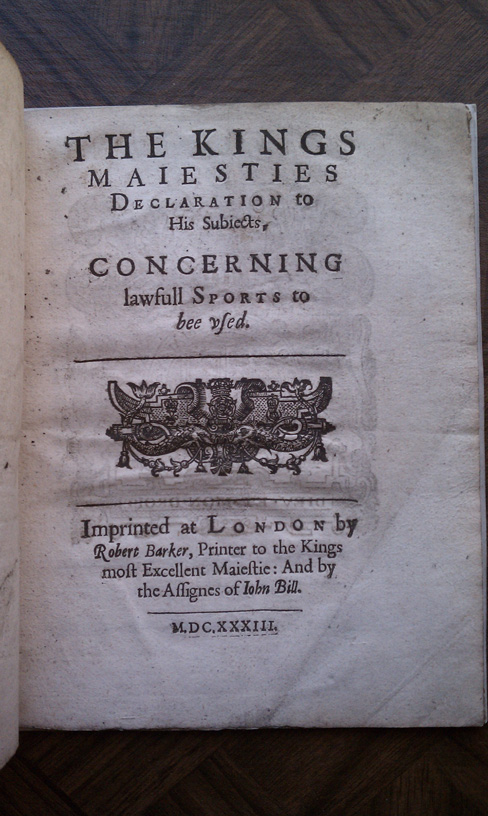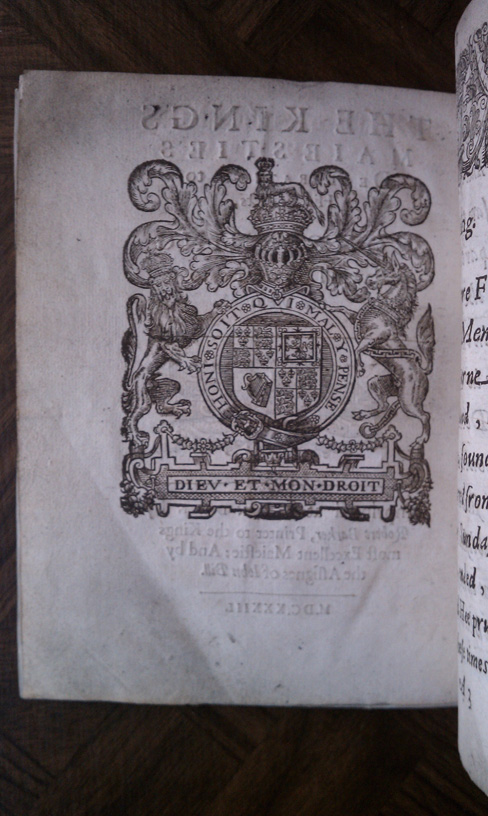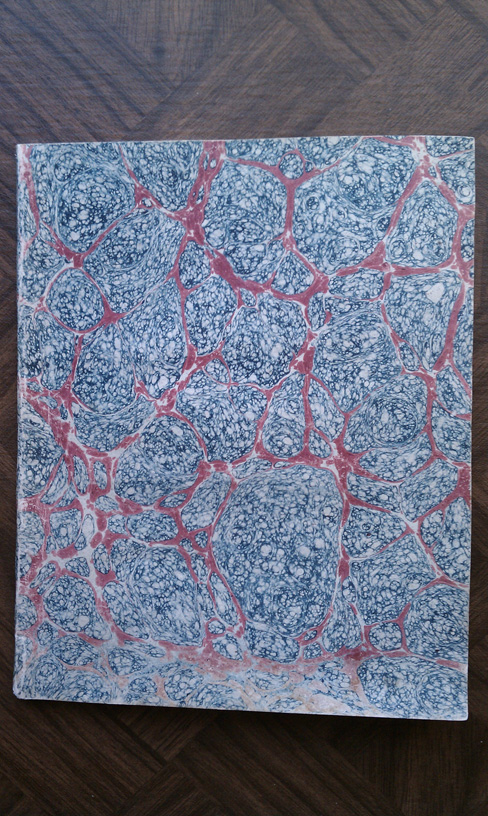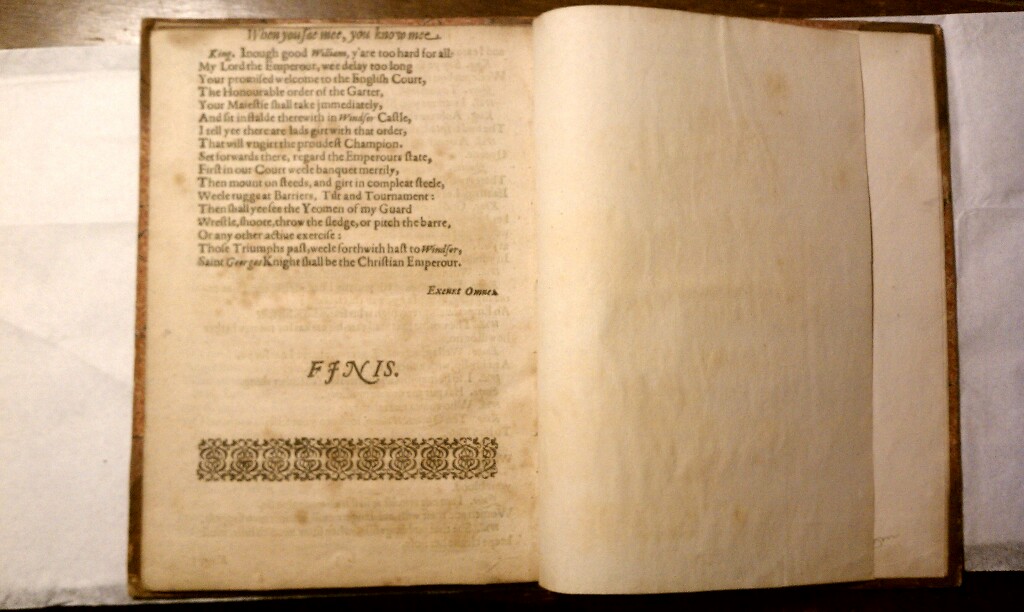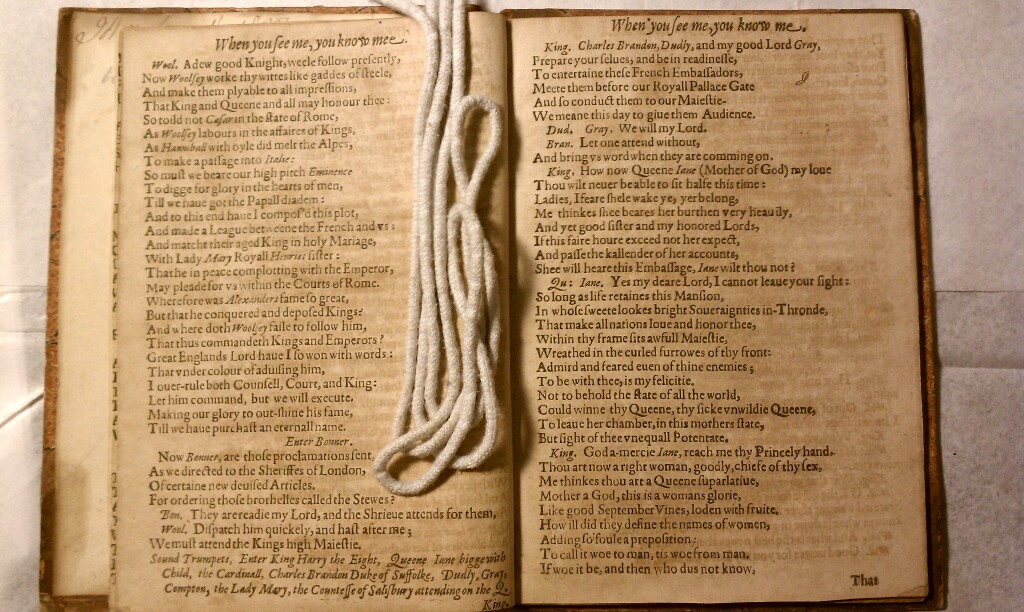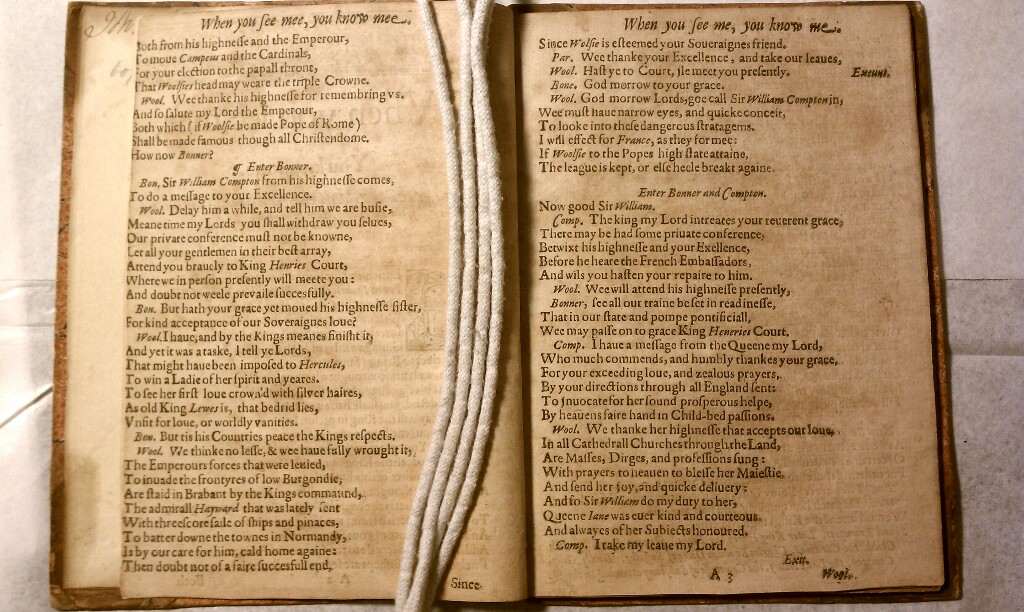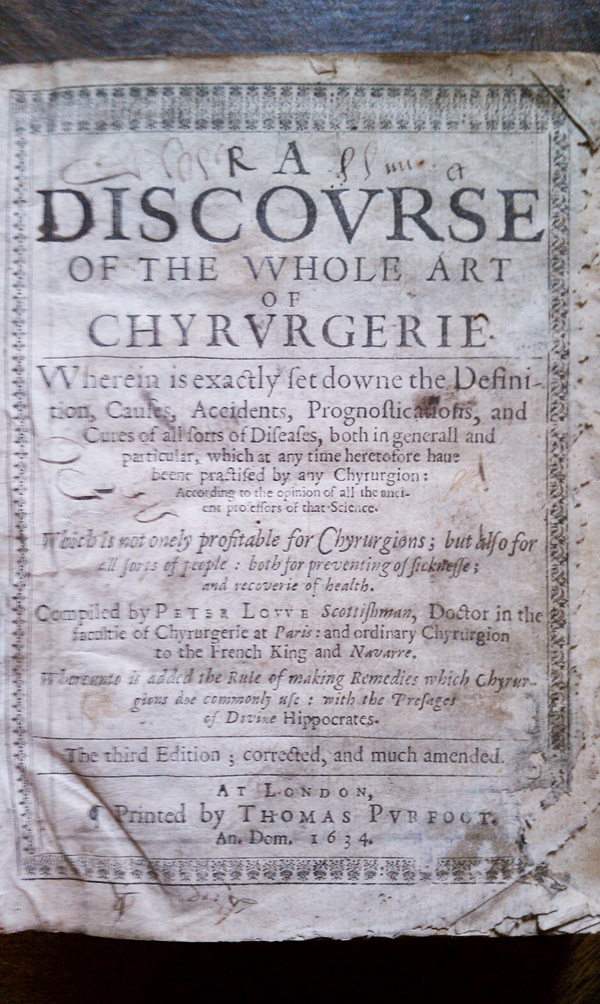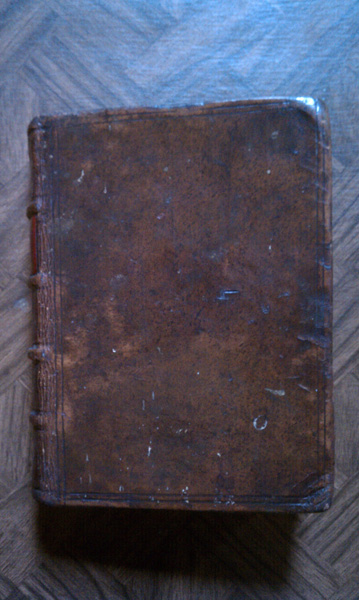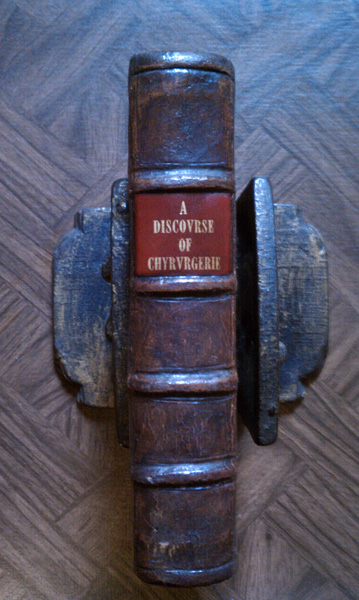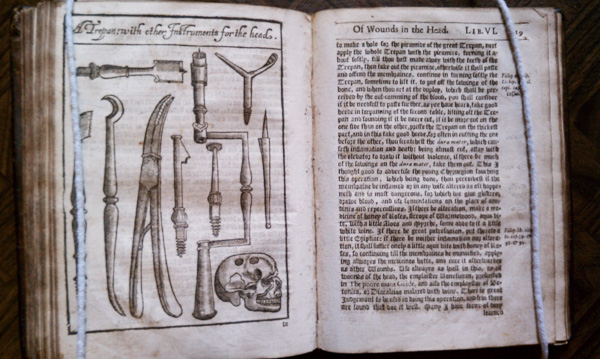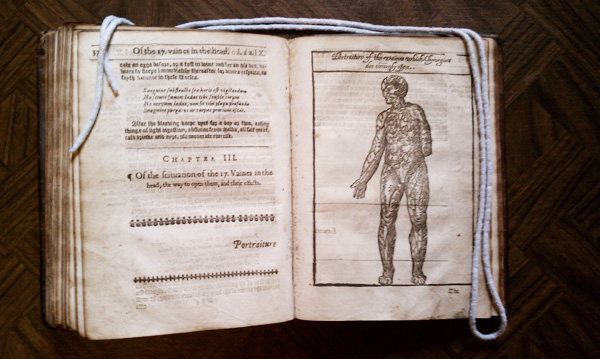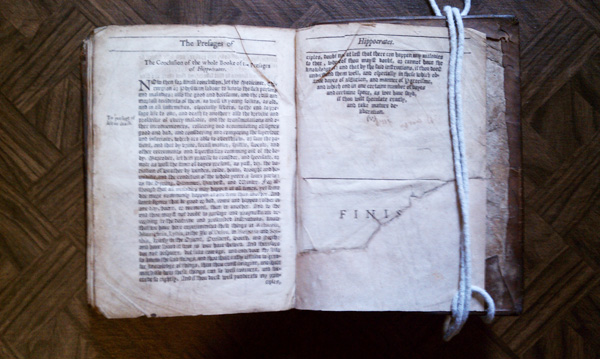Lowe, Peter. A Discovrse of the VVhole Art of Chyrvrgerie. VVherein is exactly set downe the Definition, Causes, Accidents, Prognostications, and Cures of all sorts of Diseases, both in generall and particular, which at any time heretofore haue beene practised by any Chyrurgion : According to the opinion of all the ancient professors of that Science. Which is not onely profitable for Chyrurgions ; but also for all sorts of people : both for preventing of sicknesse; and recoverie of health. Compiled by Peter Lowe Scottishman, Doctor in the facultie of Chyrurgerie at Paris : and ordinary Chyrurgion to the French King and Navarre. Whereunto is added the Rule of making Remedies which Chyrurgions doe commonly use : with the Presages of Divine Hippocrates. The third Edition ; corrected, and much amended. Thomas Purfoot, London, 1634. Quarto. STC 16871.
Peter Lowe (c.1550-1610), a Scotsman, was a prominent surgeon and the founder of the Faculty of Physicans and Surgeons of Glasgow. After leaving the British Isles during his childhood and living in France for nearly thirty years (serving as surgeon to Henri IV for six of them), he returned around 1596 and arrived in Glasgow by early 1598. The Whole Course of Chirurgerie, his major work, was first published in 1597, and, in the course of expansion and revision for the second edition (1612), its title was changed to that of the present copy. A fourth and final edition was printed in 1654. This textbook and reference work appears to have been popular among students of medicine, and, if we are to trust the title, some general readers as well.
Lowe opted to write the work
in the vernacular, a move which could have attracted much criticism from contemporaries, who favoured Latin as the legitimate medium for academic discourse. It was constructed partly in the form of a catechism, or conversation between the author and a student, and partly a description of surgical techniques, medical treatments, and examples from his practice in France. The second edition of the book implies that his son John was the second party in the catechism, although at the time he was still a child. Lowe’s translation, probably from the French, of the Presages of Hippocrates is included in the work, which was republished on a number of occasions, being retitled A Discourse of the Whole Art of Chirurgerie from the second edition, published in 1612. Interestingly, though perhaps typically, many of the illustrations in the book are copied directly—in some cases with the French titles reproduced—from the works of Ambroise Paré. (From the Oxford Dictionary of National Biography)
This edition, the third, is illustrated with 22 large woodcuts of medical instruments and human anatomy; there is also a large woodcut coat of arms on the title page verso. Beyond the illustrations, it is worth noting that Lowe’s work contains an early English translation of the famous Hippocratic Oath, the first having appeared in Francisco Arceo’s Most Excellent and Compendious Method of Curing Wounds in the Head (1588). And, as the 1597 date of the first edition predates the first usage recorded by the OED (1617), the work may be the first to have used “amputation” in its current medical sense.
The present copy collates complete and is bound in what appears to be its original 17th-century calf binding with its original endbands and with simple blind-ruled borders on each cover. A morocco label with gilt title has been added to the spine by a later owner. The fore edge of the title page and following leaf are frayed with some loss to the paper, but the loss only minimally affects the printed material at the foot of each leaf: no text is compromised and the woodcut on the verso is only slightly disturbed. A strip containing the top 3cm of sig. I4 (pp. 119-20) has been torn away, fortunately resulting only in the loss of the page number and “THE” in the section title on recto (“THE FIFT BOOKE”), and five chapter titles (22-26) in the table of contents that follows on the verso. The missing titles are of course repeated later at the head of each chapter. Finally, roughly a third of the final leaf of the volume at the end of “The presages of Hippocrates,” sig. D4, is torn away. The loss affects only part of the “S” in “FINIS” on the recto; the missing paper has been replaced in a later repair. A worm track that does not obscure any text appears near the gutter at the foot in some quires.
Sig. D1v contains the signature of Laurence Wilde, who confirms that the present copy was his “Booke” in a statement that is repeated on sig. B5v. The latter page also includes an inscription in Wilde’s hand that appears to indicate that an “I Walker” “gaue” it, seemingly to Wilde himself. The verso of the final leaf in the volume contains the additional signature of one “A F” or “A[…] Firby.” The hands of both signatures appear to date from the 17th century.
Overall, this is a nice, complete copy of an important work in the history of English and Scottish medicine, a copy made more desirable because of its original binding and its preservation of the full set of woodcuts in clear impressions. It would be a great addition to any collection of Early Modern medicine. SOLD*
*A copy of this edition with similar fraying to the edges of the title page (though repaired), a facsimile final leaf, and an unremarkable modern cloth binding reached $2160 at Christie’s in 2005: Sale 1534, Lot 136.
